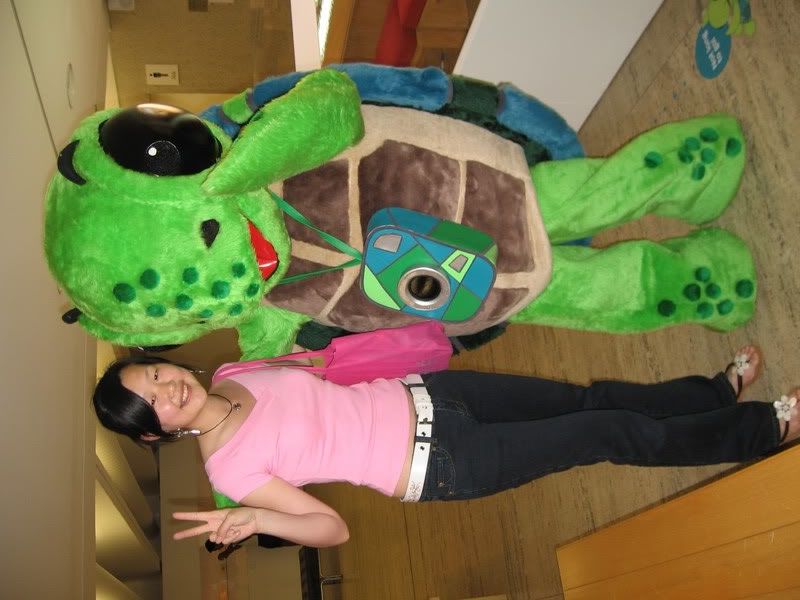Speakers:
Katheryn Weir ( Head of cinema)
Yang Fudong
Sima Urale
Apichatpong Weerasethakul
Tuấn Andrew Nguyễn
It is reflected in this exhibition that museums and galleries are able to showcase moving images (screen based medium) better and better, together with many other medium of art works.
• The art world has now recognize film as an art form
• It’s the first time APT has included film in an important degree
- 7 film makers were invited
- There are more and more institutions that recognize the possibility of film
e.g Shanghai Biennale 2004, Busan Biennale
- There are many important film presentation
• APT 5 has included special screening and special thematic programe in different time
• The artists’ practices include:
- Andrew: 3 paintings and 1 video
- Apichatpong: Big screen flim work
- Sima: a film maker whose work has won many art prizes
- Yang Fudong: parallel in both film and cinema and specialize in video work
Tuan:
*** Video Sketch***
To him, the works don’t seem to work and the irony is that he continues to work even when he thought so
Apichatpong:
• His works mainly focuses on cinema
• Sometimes, his works would be restricted by the economy
• Like Tuan, Many of his works are sketches
• What kind of audience would experience the work would affects the way he edit that piece of work
Sima:
• Make film for cinema (it is different from making film for theatre)
• Never made works purposely for display in gallery
- But others still managed to come out with ways to display her works
E.g the black box that contain the works are meant to look like televison
- By doing so, people can position it or take it to a new context or sunject matter to suit the exhibition
- The artist wants the viewer to experience the full story
- By putting the works into the gallery, the films for example, are presented in loops instead of the whole film
- Seeing their works being shown in pieces is a little hard to take
Yang Fudong:
Strange Paradise
• Has strong narrative
• It is a portrait of a particular age and period of young people’s life coming out of the University
Qn: How do you feel to see your work (90 mins long film) to be displayed in a Cinema and in an exhibition?
• Both are problematic
• The audiences would have different experience in different area
e.g. the raining scene
In the cinema or movie theatre, the audiences would be able to see more details as it is more quiet
In the gallery, the viewer would not be able to see the details as much
• “The viewer and the work are like key and lock, the main thing is if the key is right for the lock. Hence, it doesn’t really matter where the work is displayed.”
Apichatpong:
Haunted House
• This video is acted by the villagers in his home town (66 people in total)
• He made this work specially for the Biennale, hence he was conscious of the work being shown in a single channel
Point to note: Film makers usually apply for funding for their work and the funders may see the work differently as the artist. E.g. they would want it to be more for cinema then to be seen as an artwork.
Sima:
• Many people did not consider film as an art form
• “To me, they are like art forms because they can be broken down into frames and each frame is like a painting.”• Museums are trying to get out of the norms (the black box)
***Try and compare the film chosen and shown in recent Sydney Biennale and APT 5.***
Qn: Is how the viewers would be viewing the works seen as a challenge to the artist? E.g. the works are displayed in loops instead of the full version.
Ans: Issues that also have to be considered includes the quality of the projection and if seating are provided.
Qn: Photography versus films.
Apichatpong:
• Even if it is still, photo is still a photo and film is still a film.
Yang Fudong:
• He sees no difference between film and photography
• A photo is a film with one picture, while a film is made up of many pictures.
• If a photograph is well taken, it is a good film
• The only difference is that one is long and the other is short
Qn: There are many ways of looking at the images/film, especially in different country and culture. Are these considered as distractions?
Apichatpong:
• “We need distractions in life.”
• Going to museum is a way to interact
e.g the same film shown in certain country may make people laugh but in another, the viewers may remain quiet. These are different forms of interactions.
• The meaning of works may differ in different places but the disturbance (laughter) may be good.
***** Personal Opinion *****
Things that affect how we look at the images/film not only include the country and culture in which the works are displayed, but also the way the works are displayed at the venue. The body and space are important conditions that affect perceptions.

No comments:
Post a Comment